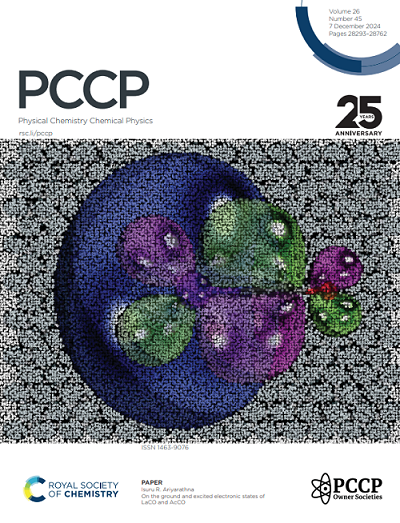Surfactant Free Microemulsions as Fluid Scaffolds for Thermal Stabilization of Lysozyme
IF 2.9
3区 化学
Q3 CHEMISTRY, PHYSICAL
引用次数: 0
Abstract
The electrostatic forces supported by hydrogen-bonding (H-bonding) interactions in the presence of surfactants stabilizes the microemulsions in general. It would be quite surprising to have surfactant free microemulsions (SFMEs) predominantly stabilized by weak but large number of H-bonding interactions contrary to common wisdom. Herein, the formulation and characterization of SFMEs comprising a hydrophobic ionic liquid (IL) and a deep eutectic solvent (DES) exhibiting high thermal stability is reported. The constituents of DES namely ethylene glycol (EG) and choline chloride (ChCl) act as polar and amphiphile components, respectively and an IL, 1-ethyl-3-methylimidazolium bis(trifluoromethylsulfonyl)imide works as a hydrophobic entity to form SFME. The formation mechanism as well as high temperature thermal stability of SFMEs has been discussed in terms of relative changes in the thickness of interfacial film stabilizing the polar and non-polar pseudo-domains predominantly via alteration in H-bonding interactions, which is supported by computational studies. The sufficiently low interfacial energy in SFMEs has been exploited to thermally stabilize Lysozyme (LYZ) in SFMEs, which showed remarkable thermal stability (up to 150 oC) as revealed by comparative enzyme activity at room temperature after heating, which is quite higher than that observed in buffer. The present study not only adds to the existing knowledge about the formation and stability of SFMEs but is also expected to prompt other researchers for designing relatively greener IL or deep eutectic solvent (DES) based SFMEs for utilization in various biological and other applications.求助全文
约1分钟内获得全文
求助全文
来源期刊

Physical Chemistry Chemical Physics
化学-物理:原子、分子和化学物理
CiteScore
5.50
自引率
9.10%
发文量
2675
审稿时长
2.0 months
期刊介绍:
Physical Chemistry Chemical Physics (PCCP) is an international journal co-owned by 19 physical chemistry and physics societies from around the world. This journal publishes original, cutting-edge research in physical chemistry, chemical physics and biophysical chemistry. To be suitable for publication in PCCP, articles must include significant innovation and/or insight into physical chemistry; this is the most important criterion that reviewers and Editors will judge against when evaluating submissions.
The journal has a broad scope and welcomes contributions spanning experiment, theory, computation and data science. Topical coverage includes spectroscopy, dynamics, kinetics, statistical mechanics, thermodynamics, electrochemistry, catalysis, surface science, quantum mechanics, quantum computing and machine learning. Interdisciplinary research areas such as polymers and soft matter, materials, nanoscience, energy, surfaces/interfaces, and biophysical chemistry are welcomed if they demonstrate significant innovation and/or insight into physical chemistry. Joined experimental/theoretical studies are particularly appreciated when complementary and based on up-to-date approaches.
 求助内容:
求助内容: 应助结果提醒方式:
应助结果提醒方式:


